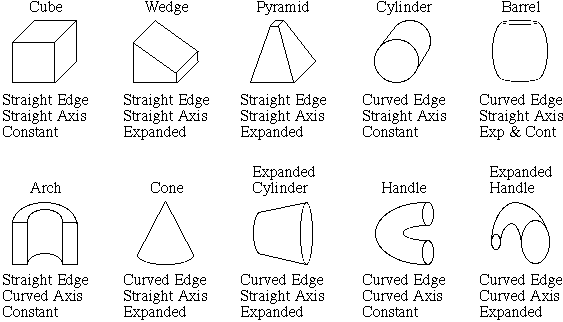Above each geon is the geon's name. Below each geon is a list
of nonaccidental properties : (1) straight or curved edges, (2) straight
or curved axis, and (3) constant, expanded, or expanded and contracted
sides. Certain properties of edges in a two-dimensional drawing are taken by
the visual system as evidence that those edges in a three-dimensional world
would contain the same properties. So, for example, if a two-dimensional
drawing contains a curved line, the visual system infers that the same
smoothly curved feature would exist in a three-dimensional setting.
This inference made by the visual system demonstrates the principle of
curvilinearity. Properties such as curvilinearity have been termined
nonaccidental (Witkin & Tenenbaum, 1983) because they would only rarely
be produced by accidental alignments of viewpoint and object features.
An example of an acciental alignment is if a curved line fell on the retina
in such a way that the curvature of the line exactly matched the curvature
of the retina. Here, the line would be perceived as straight instead
of curved. An accidental alightment of this sort is highly unlikely.
Thus, the visual system operates under the assumption that the image falling
on the retina is not an accident of viewpoint.
![]()

